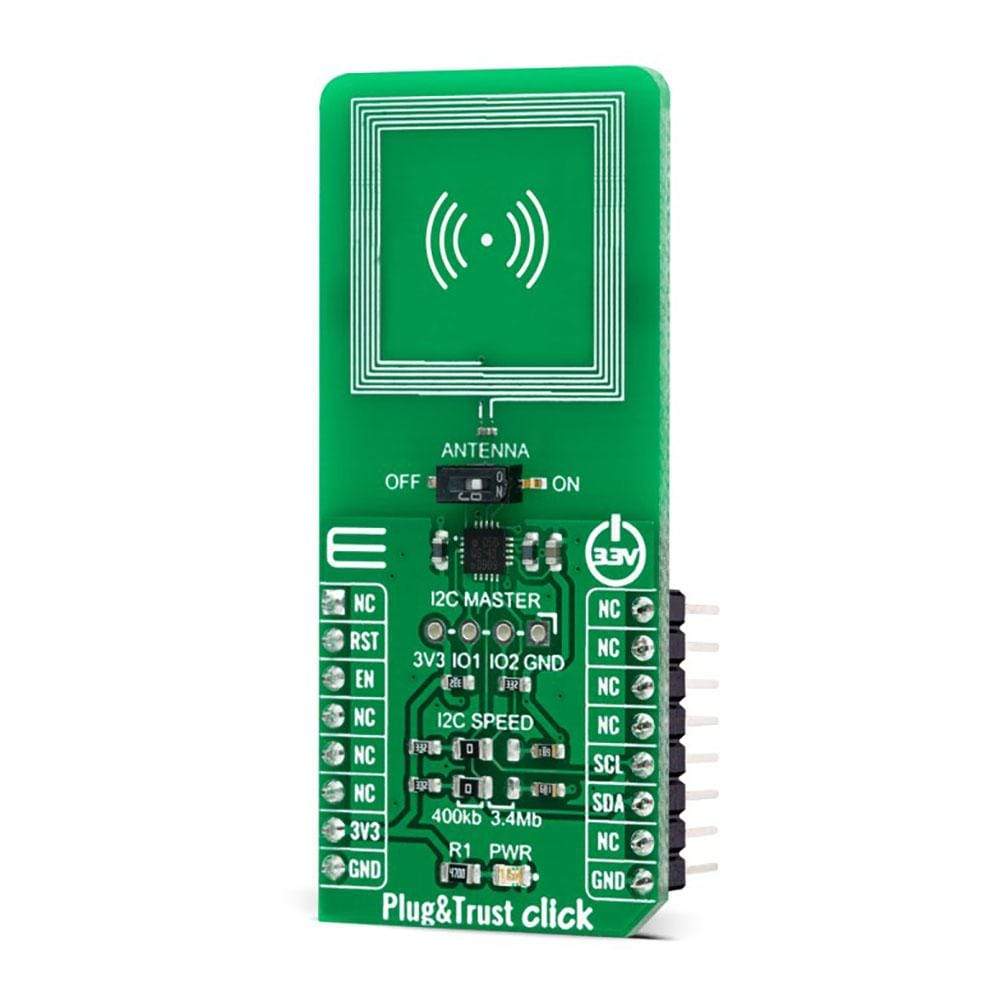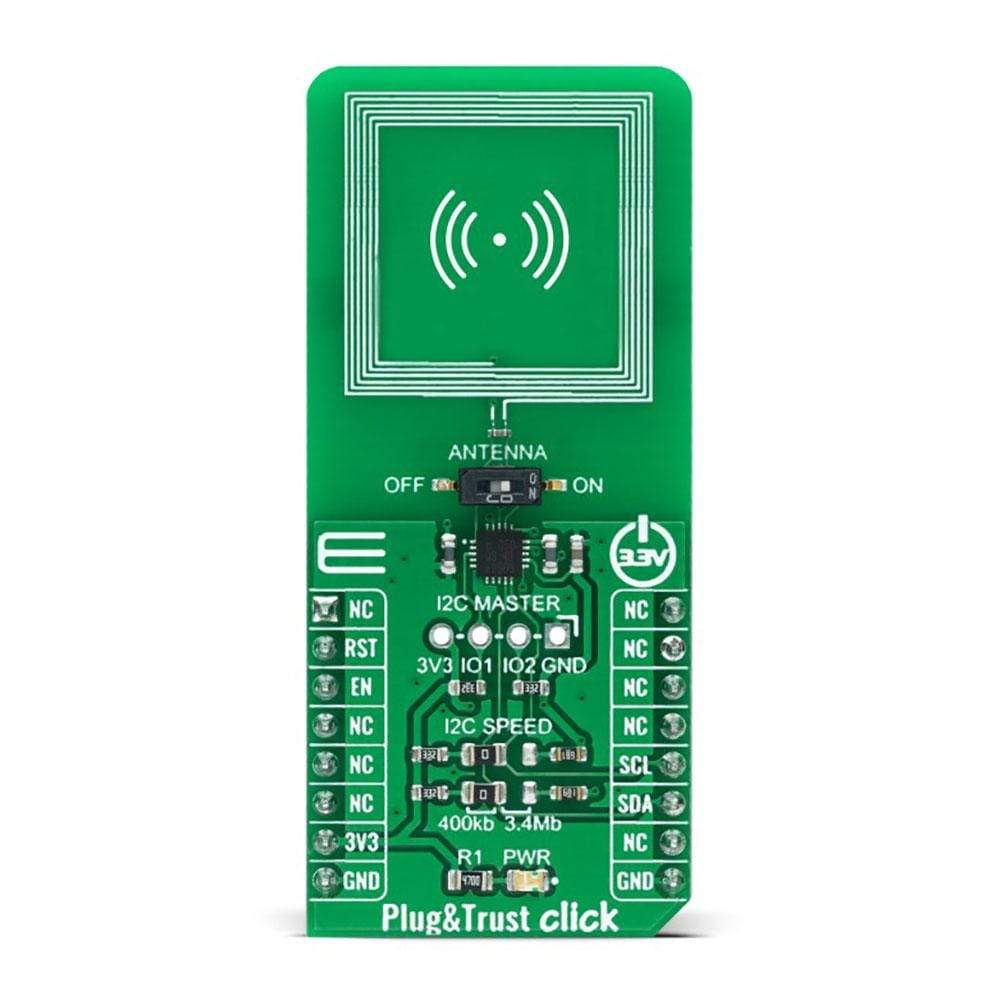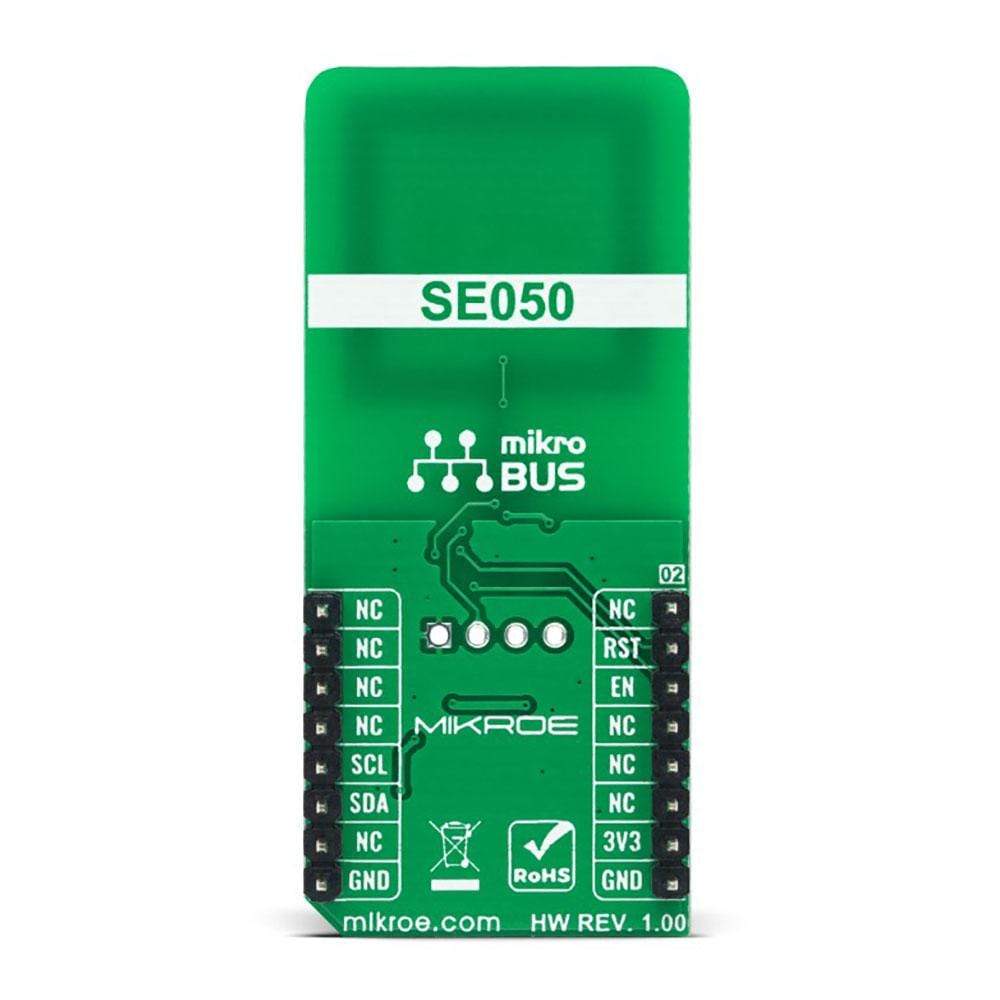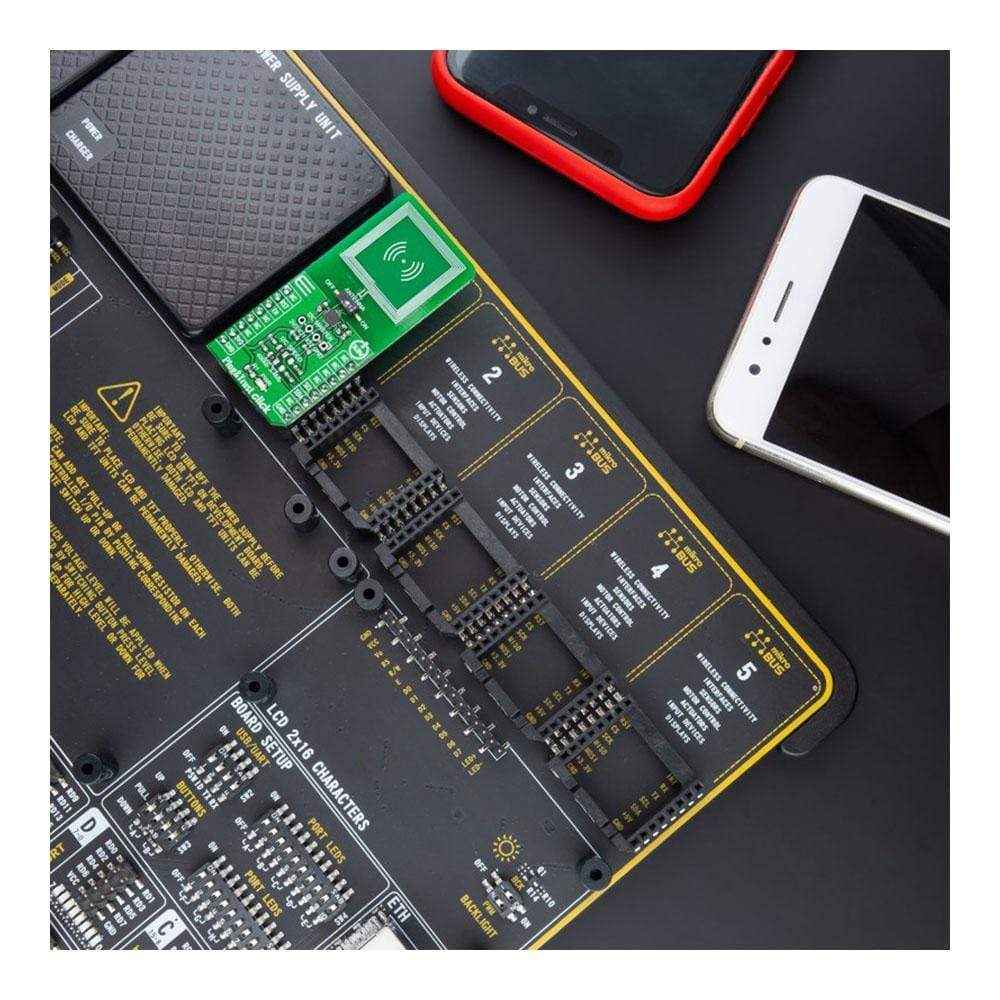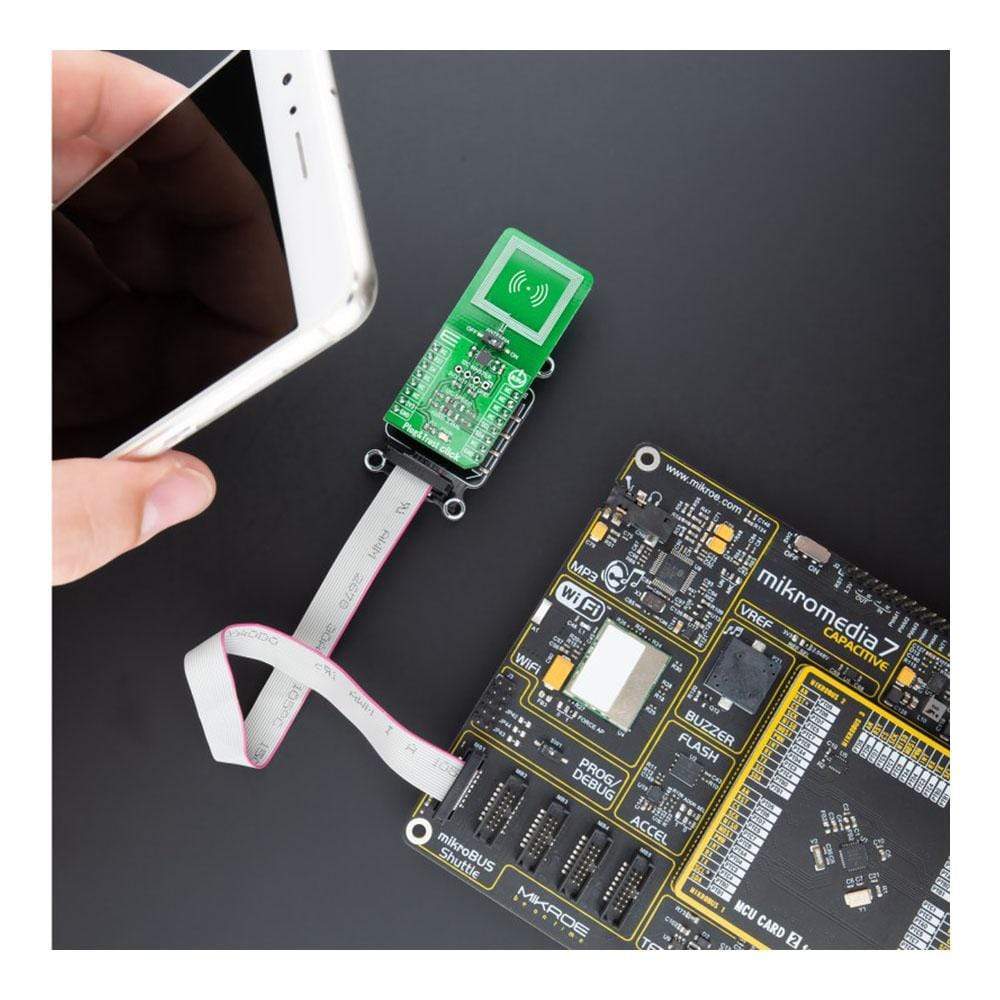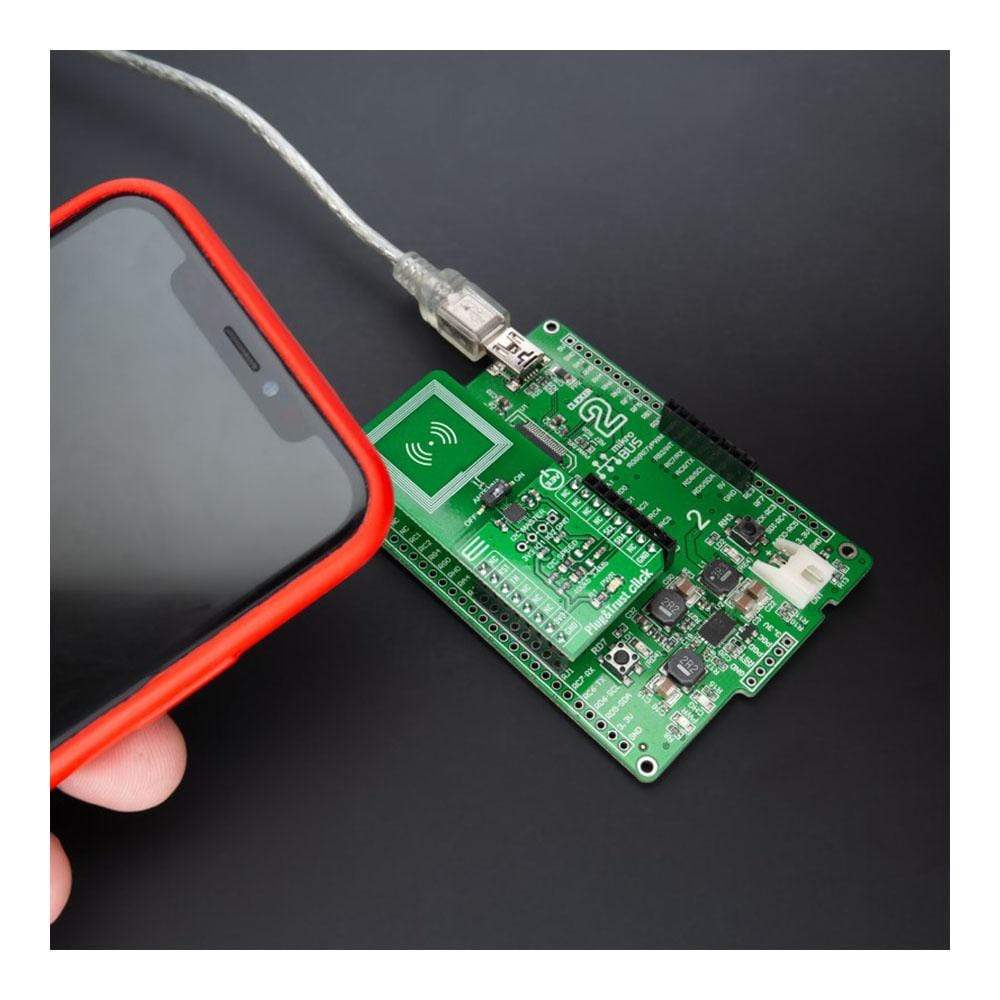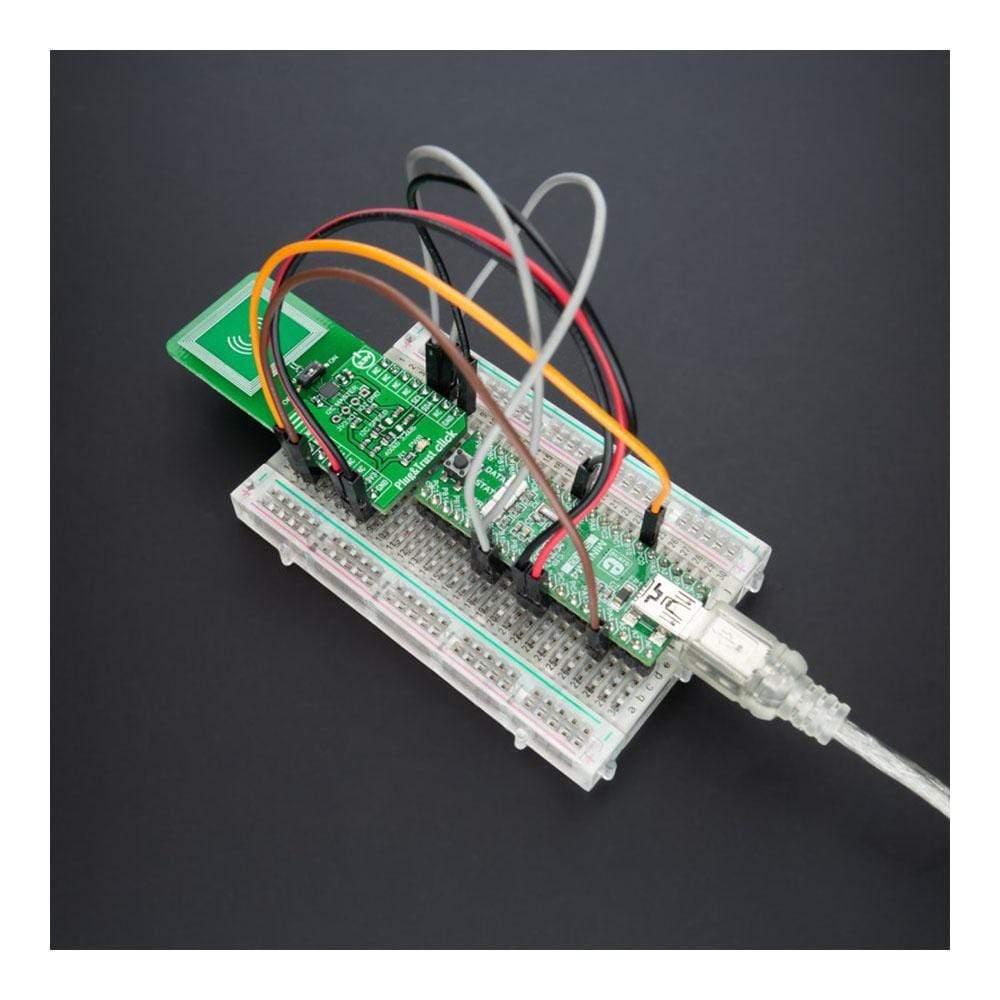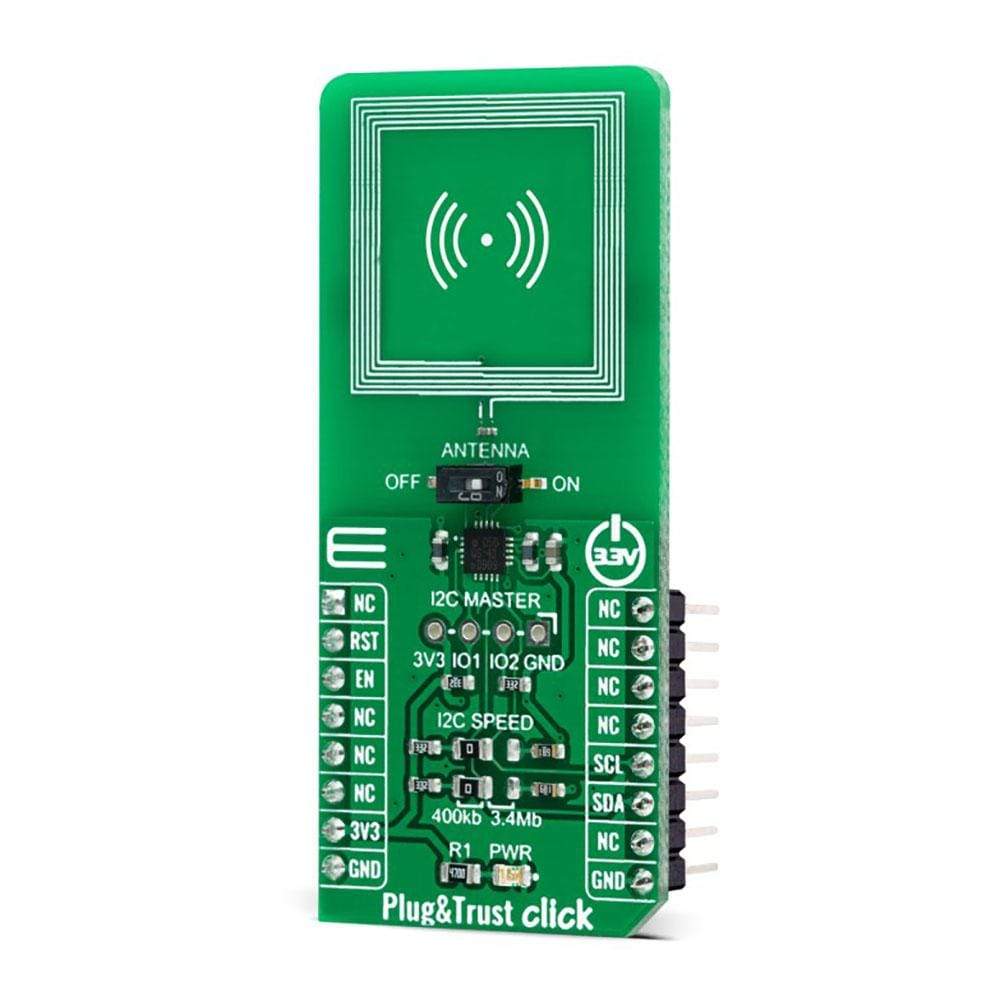
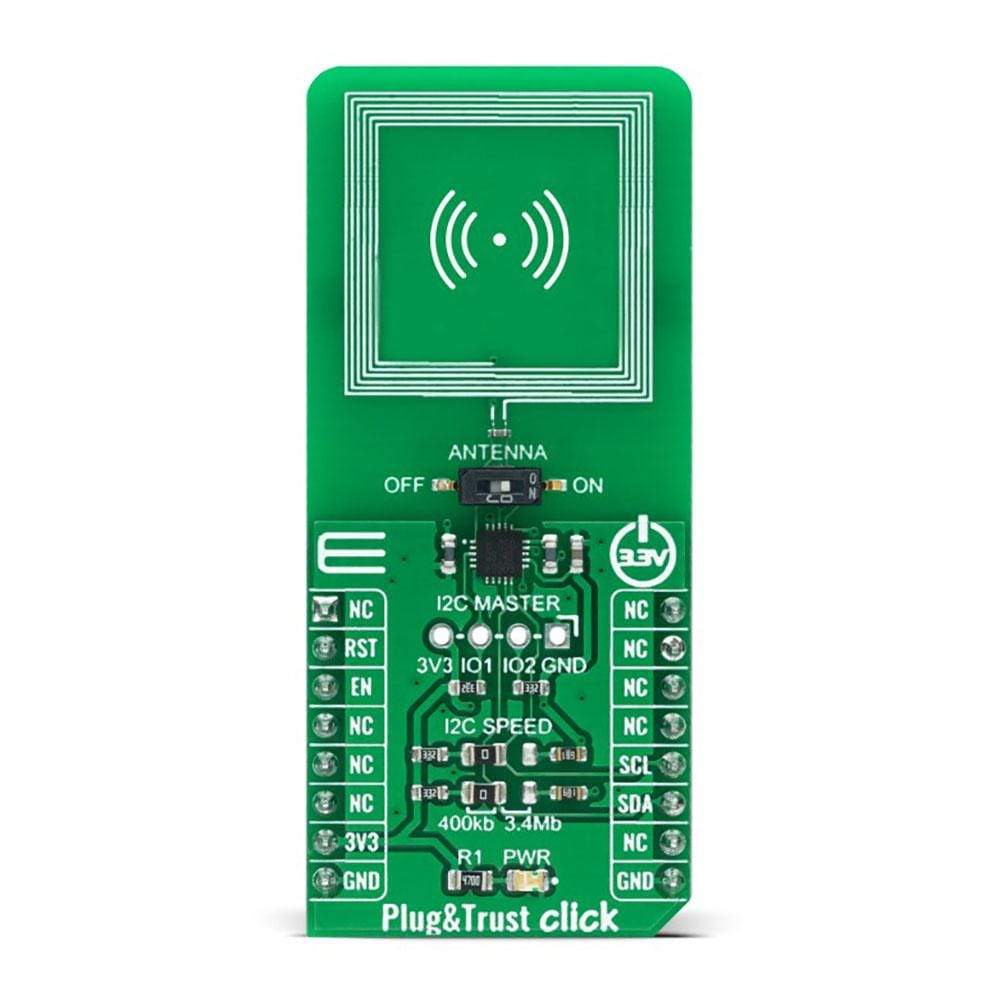
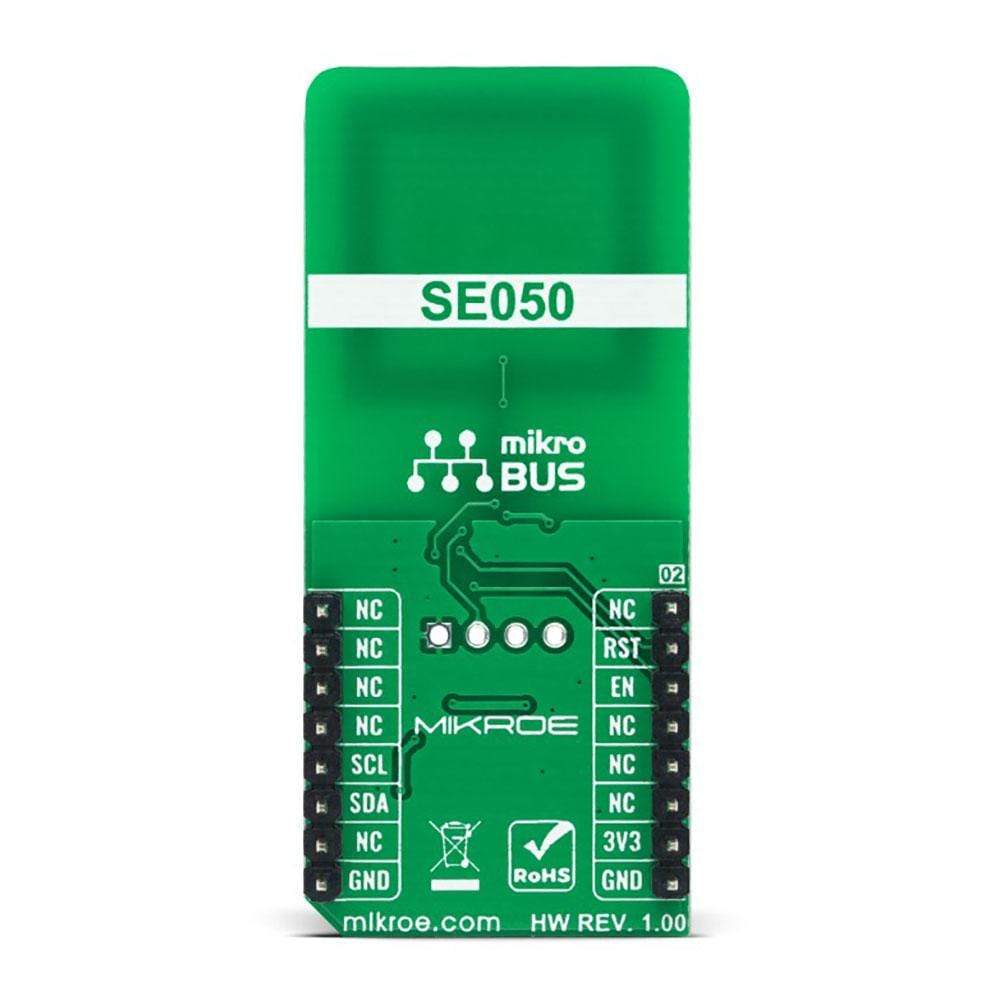
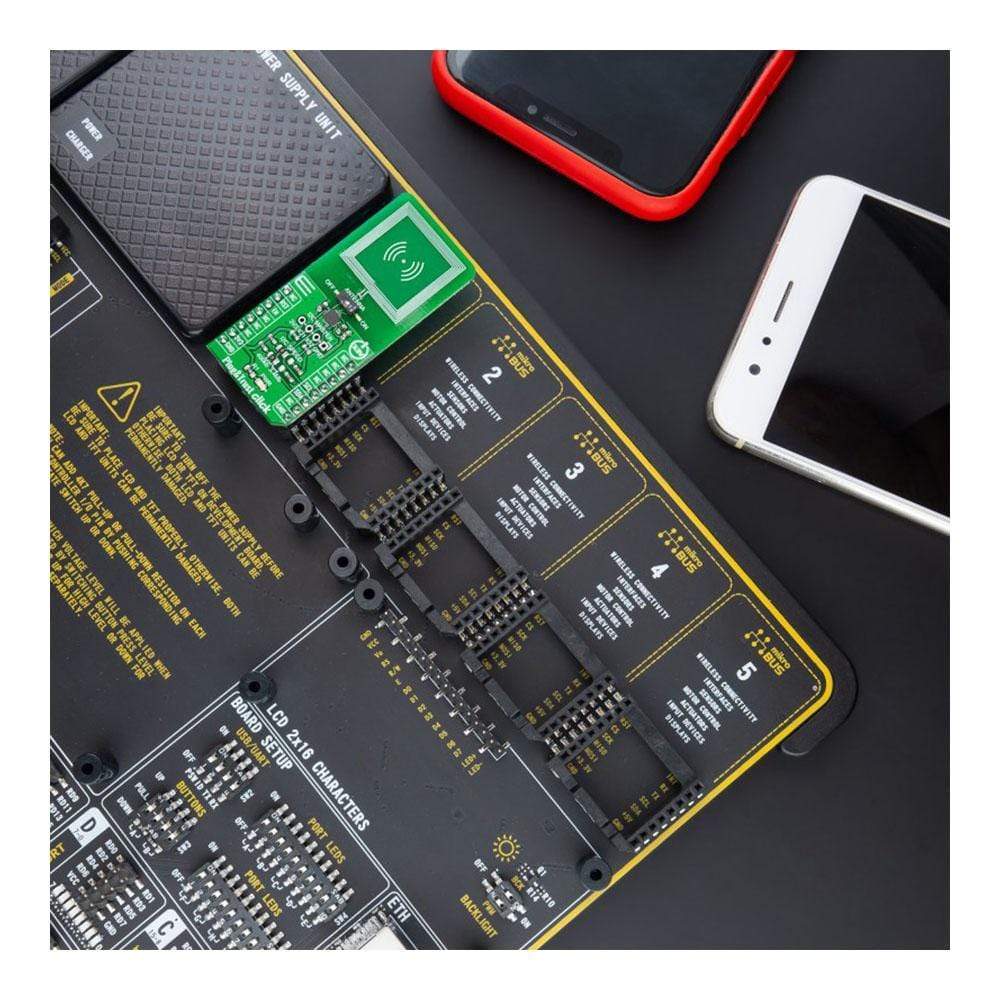
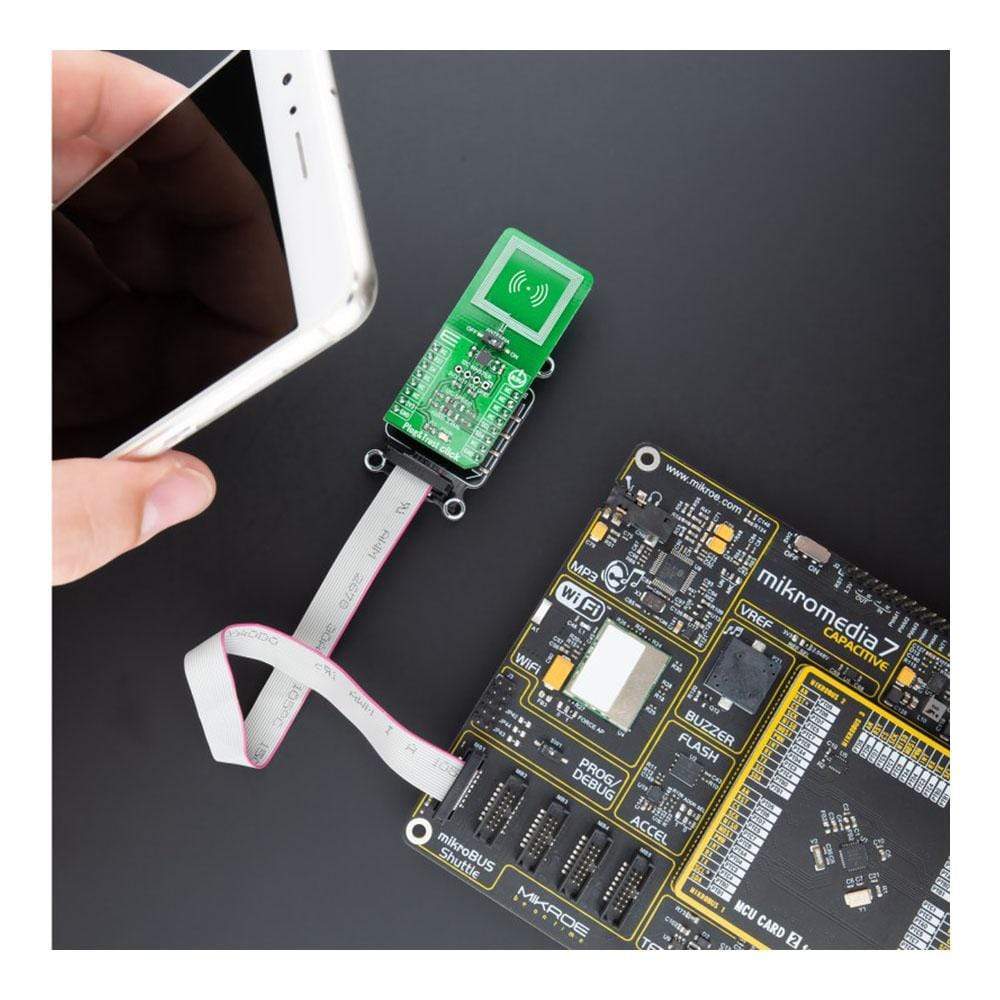
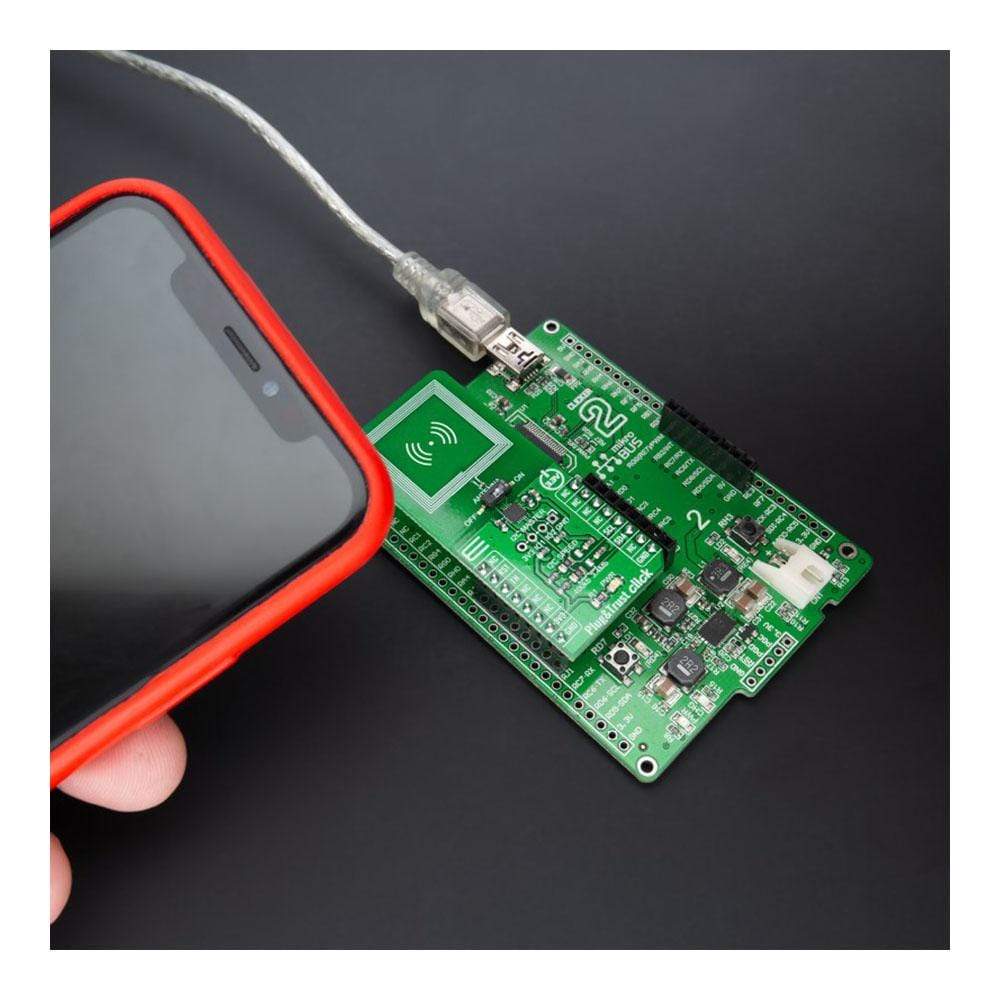
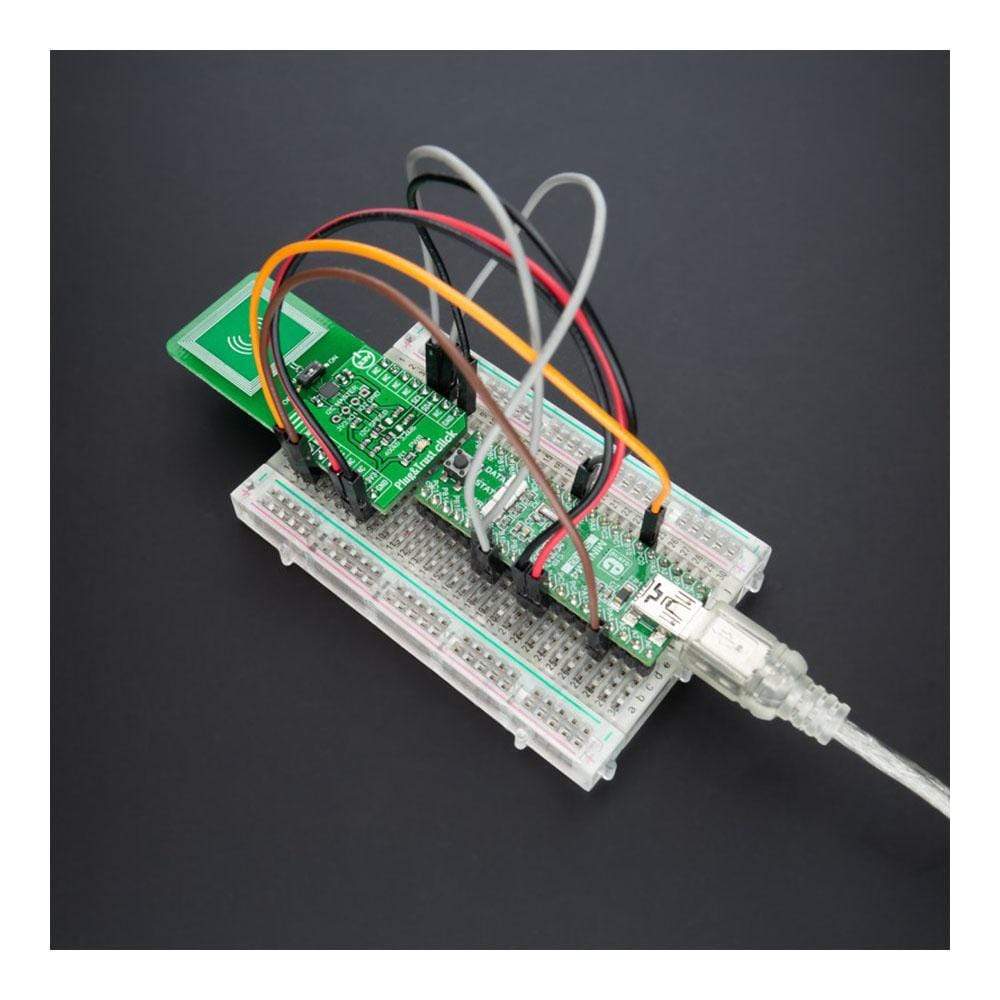
Overview
The Plug&Trust Click Board™ is a compact add-on board that contains a ready-to-use IoT secure element solution. This board features the SE050C secure element IC NXP, which provides a root of trust at the IC level, and it gives an IoT system state-of-the-art, edge-to-cloud security capability. The SE050C allows for securely storing and provisioning credentials and performing cryptographic operations for security-critical communication and control functions. It has an independent Common Criteria EAL 6+ security certification up to OS level and supports both RSA & ECC asymmetric cryptographic algorithms with high key length and future proof ECC curves, protecting the SE050C even against sophisticated non-invasive and invasive attack scenarios. This Click Board™ is suitable in IoT security use cases such as secure connection to public/private clouds, device-to-device authentication, sensor data protection, and more.
Plug&Trust Click is supported by a mikroSDK compliant library, which includes functions that simplify software development. This Click Board™ comes as a fully tested product, ready to be used on a system equipped with the mikroBUS™ socket.
Downloads
How Does the Plug&Trust Click Board™ work?
The Plug&Trust Click Board™, as its foundation, uses the SE050C, a ready-to-use IoT secure element solution that provides a root of trust at the IC level, and it gives an IoT system state-of-the-art, edge-to-cloud security capability from NXP Semiconductors. It is designed to be used as a part of an IoT system; works as an auxiliary security device attached to a host MCU. It offers enhanced Common Criteria EAL 6+ security certification up to the OS level and supports both RSA and ECC asymmetric cryptographic algorithms with high key length and future proof ECC curves. The latest security measures protect the IC against sophisticated non-invasive and invasive attack scenarios.

The SE050C is a turnkey solution that comes with JavaCard operating system and an applet optimized for IoT security use cases, pre-installed. To support scalability while servicing the broadest range of use cases in IoT applications, the SE050C is available in different pin-to-pin compatible configurations, including versions with support for sensors directly attached to the device, the I2C Controller, or contactless interface.
The Plug&Trust Click Board™ communicates with MCU using the standard I2C 2-Wire interface, where the host controller represents the Controller and the Click board being the Target. Besides the mandatory connection to the host controller, this Click board™ can optionally be connected to a sensor node or similar element through separate I2C interface pins located on the 1x4 male header labelled as I2C Master. In this case, the SE050C device is the Controller device, and the sensor node represents the Target.
This Click board™ also offers a choice for the user to select the appropriate I2C communication speed, selected by onboard SMD jumpers labelled as I2C SPEED to a proper position marked as 400Kb and 3.4Mb. Note that all the jumpers must be lined to the same side, or else the Click board™ may become unresponsive. On the other side, the Shutdown pin, labelled as EN and routed to the CS pin of the mikroBUS™ socket, optimizes power consumption and is used for power on/off purposes, while the RST pin has no functionality in I2C Mode. Also, this Click board has an onboard antenna, providing a wireless interface to an external device like a smartphone, connected via a switch labelled as ANTENNA with SE050C allowing the activation of the antenna itself by setting it to the appropriate ON or OFF position.
The Plug&Trust Click Board™ can be operated only with a 3.3V logic voltage level. The board must perform appropriate logic voltage level conversion before use with MCUs with different logic levels. However, the Click board™ comes equipped with a library containing functions and an example code that can be used, as a reference, for further development.
SPECIFICATIONS
| Type | Encryption,IoT security |
| Applications | Can be used in IoT security use cases such as secure connection to public/private clouds, device-to-device authentication, sensor data protection, and more. ISO14443 CL, I2C Target and Controller mode |
| On-board modules | SE050C - ready-to-use IoT secure element solution that provides a root of trust at the IC level, and it gives an IoT system state-of-the-art, edge-to-cloud security capability from NXP Semiconductors |
| Key Features | Ready-to-use IoT secure element solution, Common Criteria EAL 6+ security certification, supports both RSA & ECC asymmetric cryptographic algorithms with high key length and future proof ECC curves, protect against attack scenarios, comes with JavaCard operating system, and more. |
| Interface | I2C |
| Compatibility | mikroBUS |
| Click board size | L (57.15 x 25.4 mm) |
| Input Voltage | 3.3V |
PINOUT DIAGRAM
This table shows how the pinout on the Plug&Trust Click Board™ corresponds to the pinout on the mikroBUS™ socket (the latter shown in the two middle columns).
| Notes | Pin |  |
Pin | Notes | |||
|---|---|---|---|---|---|---|---|
| NC | 1 | AN | PWM | 16 | NC | ||
| Reset | RST | 2 | RST | INT | 15 | NC | |
| Enable | EN | 3 | CS | RX | 14 | NC | |
| NC | 4 | SCK | TX | 13 | NC | ||
| NC | 5 | MISO | SCL | 12 | SCL | I2C Clock | |
| NC | 6 | MOSI | SDA | 11 | SDA | I2C Data | |
| Power Supply | 3.3V | 7 | 3.3V | 5V | 10 | NC | |
| Ground | GND | 8 | GND | GND | 9 | GND | Ground |
ONBOARD SETTINGS AND INDICATORS
| Label | Name | Default | Description |
|---|---|---|---|
| LD1 | PWR | - | Power LED Indicator |
| JP1-JP2 | I2C SPEED | Left | I2C Speed Selection 400Kb/3.4Mb: Left position 400Kb, Right position 3.4Mb |
| J1 | I2C Controller | Unpopulated | I2C Controller Connection Header |
| SW1 | ANTENNA | Right | Antenna Activation Switch OFF/ON: Left position OFF, Right position ON |
PLUG&TRUST CLICK ELECTRICAL SPECIFICATIONS
| Description | Min | Typ | Max | Unit |
|---|---|---|---|---|
| Supply Voltage | 1.62 | - | 3.6 | V |
| Antenna Operating Frequency | - | 13.56 | - | MHz |
| Operating Temperature Range | -40 | +25 | +105 | °C |
| General Information | |
|---|---|
Part Number (SKU) |
MIKROE-4656
|
Manufacturer |
|
| Physical and Mechanical | |
Weight |
0.02 kg
|
| Other | |
Country of Origin |
|
HS Code Customs Tariff code
|
|
EAN |
8606027382666
|
Warranty |
|
Frequently Asked Questions
Have a Question?
Be the first to ask a question about this.

